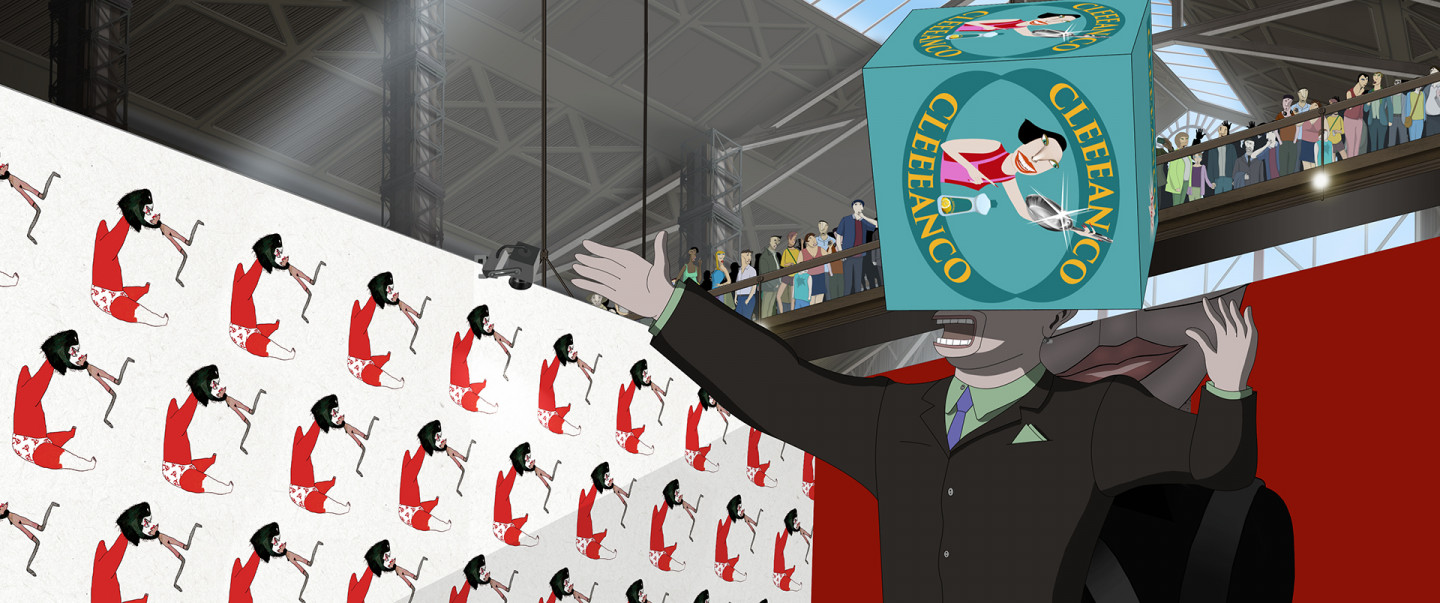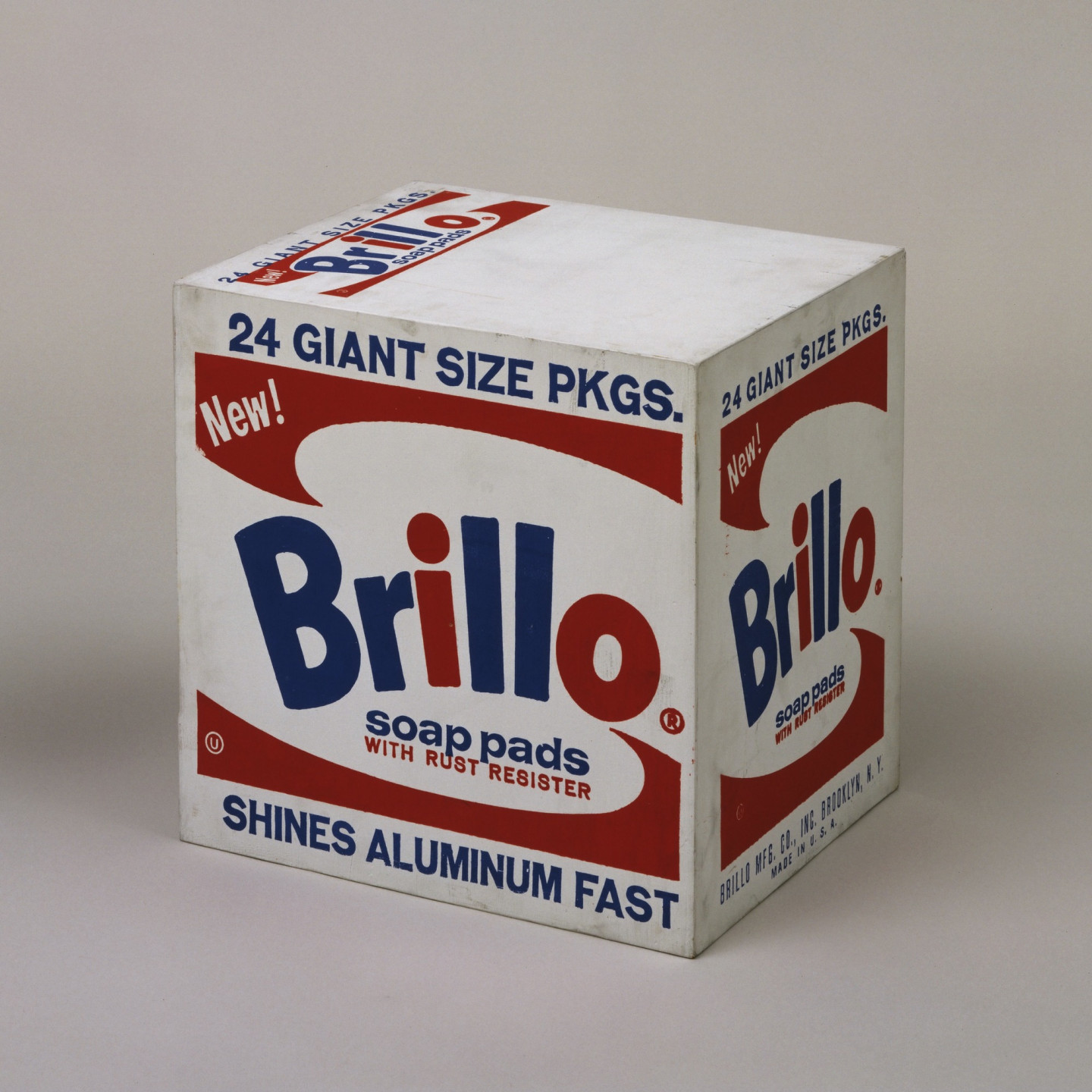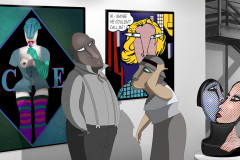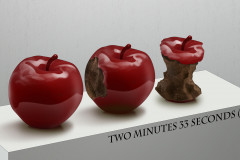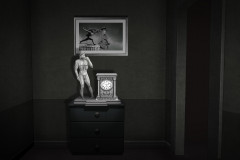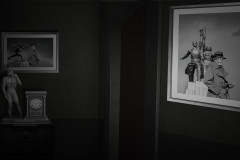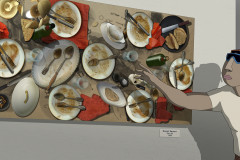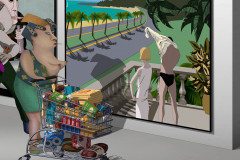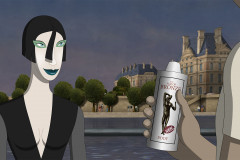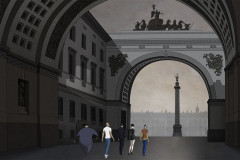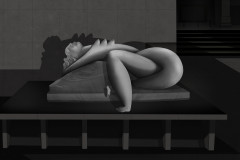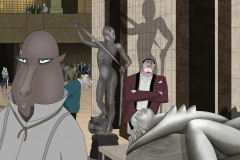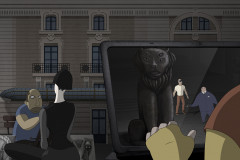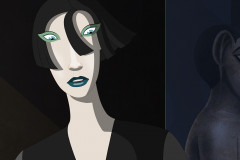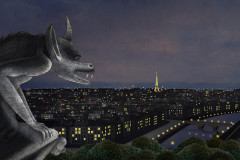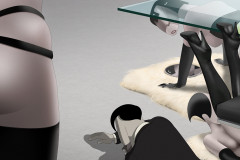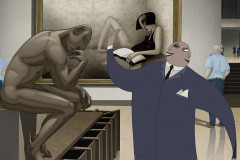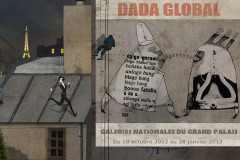Warhol, Andy: Brillo-dobozok, 1964 (polimer festék, ezüstszitanyomat, fa; 43,2 x 43,2 x 35,6 cm, Andy Warhol Museum, Pittsburgh). Az amerikai pop-art művész az amerikai fogyasztói társadalom tárgyait, pl. a mosóporos dobozt tette műalkotássá és készített belőle számtalan, különböző darabból álló kompozíciót. Szobrászat? Ha galériában találkozunk vele, igen, ha a lakásunkban vagy a boltban, akkor nem? A filmben a tokiói pop-art-kiállításon bár műalkotásként van jelen, de remek hasznát veszi Bye Bye Joe, amikr üldözőihez hozzávágja az egyik kockát.
A dadaisták az 1910-20-as években már bevezették a „ready-made” fogalmát a művészetbe, azaz a hétköznapi, iparilag előállított használati tárgyak beemelését alkotásaikba (ld. Duchamp piszoárját vagy biciklikerekét). Első ránézésre Warhol is ezt tette a galériában feltornyozott mosóporos dobozokkal. Azonban itt van egy csavar: Warhol nem a kartondobozokat állította ki, hanem azok tökéletes, fából készült, festett másolatait, melyekből 100 példányt gyárttatott le. Ezzel nem csinált mást, mint ami a művészet évszázados egyik feladata: a valóságot imitálta. Amikor elámulunk egy-egy márványból faragott barokk szobor élethűségén, akkor a legmagasabb művészeti teljesítményként csodáljuk az alkotást. Miért ne tehetnénk ezt a megszólalásig hű mosóporos dobozok láttán is? Te mit gondolsz? A korabeli fogadtatás nem volt egyértelmű: „mintha a galériát arra kényszerítették volna, hogy súrolószivacs raktárként működjön” - hangzott egy kritika, s a neves New York-i Stable Galleryben rendezett tárlaton a meghívott gyűjtők nem vásároltak meg annyi dobozt, mint ahányat Warhol eladni remélt. De nem kellett már sokat várni ahhoz, hogy az üzlet igazán beinduljon... a „Warhol” márka hamarosan a művészeti élet legkeresettebbb terméke lett.
Warhol, Andy: Brillo Boxes, 1964 (polymer paint, silkscreen ink, wood; 43.2 x 43.2 x 35.6 cm, Andy Warhol Museum, Pittsburgh). The American pop artist turned objects of consumer culture—like a box of detergent—into artworks, creating numerous compositions from different variations. Sculpture? Yes, if you see it in a gallery. But if it’s in your home or a store, is it still art? In Ruben Brandt, Collector, Warhol’s piece appears as an artwork in the Tokyo pop art exhibition—until Bye Bye Joe throws one of the boxes at his pursuers.
The Dadaists of the 1910s and ’20s introduced the idea of the “readymade,” incorporating ordinary, mass-produced objects into art (think of Duchamp’s urinal or bicycle wheel). At first glance, Warhol appears to be doing the same with his stacked Brillo boxes. But here’s the twist: he didn’t display actual cardboard boxes, but perfect, painted wooden replicas—100 of them, produced by craftsmen. In doing so, Warhol was fulfilling one of art’s oldest functions: imitation of reality. When we marvel at the lifelike detail of a Baroque sculpture carved from marble, we praise it as a pinnacle of artistic achievement. So why not admire these uncanny Brillo boxes in the same way?
What do you think? Contemporary reactions were mixed. One critic remarked it was “as if the gallery had been forced to operate as a scouring pad warehouse.” At the time of the exhibition at the renowned Stable Gallery in New York, invited collectors didn’t purchase as many boxes as Warhol had hoped. But it wouldn’t be long before the market caught up. The “Warhol” brand soon became one of the most sought-after names in the art world.






